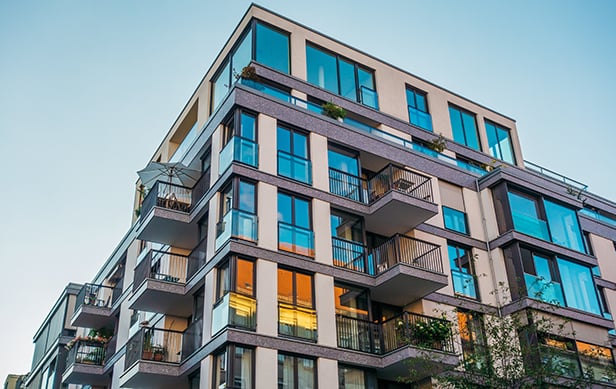In October, AMB Morgan Business Center-Building 100, in Savannah, GA, became the largest investor-owned industrial development in North America to achieve Gold LEED Core & Shell certification from the US Green Building Council. But the capital crisis has prompted some observers to wonder if the 346,000-square-foot facility owned by San-Francisco-based AMB Property Corp. in may be part of a trend doomed to be halted in its tracks as developers and tenants abandon environmental concerns in favor of paring budgets. In this second part of a GlobeSt.com interview with Chris Brandt, an associate in the Los Angeles office of Jones Lang LaSalle, we delve into the likely impact of the current economic situation on the future of sustainable development.
GlobeSt.com: Do you think the current economic situation will set back the move to sustainability, particularly since many tenants looking to survive may want to reduce costs NOW by lowering their rent rather than thinking long-term?
Brandt: Industrial tenants looking to lower their rents now should still consider green buildings. While it is true that increased development costs are ultimately passed on to the tenant through rent, these costs are considered over the long term by the developer. The tenant can enjoy the short-term benefits of lower energy costs and improved workforce environment over the next few years without the full liability of paying for these improvements.
GlobeSt.com: With the cost of borrowing going up due to tighter standards, won't the long-term cost-savings formulas need to be revised?
Brandt: Yes. We will see how this affects how developers choose to react. But industrial developers are doing this not only for the improved environmental consequences of their buildings. Many cities are now requiring that new buildings be built to LEED standards. Beginning Nov. 1, the cities of Los Angeles and San Francisco enacted ordinances requiring that all 50,000+-square-foot industrial buildings must be built according to LEED principles, regardless of the economic situation. Furthermore, many cities and counties are offering incentives for incorporating sustainable practices into industrial projects.
GlobeSt.com: Is greater use of sustainable building practices bringing construction costs for these features down?
Brandt: Yes. For most architecture and construction firms, sustainable practices are standard operating procedure rather than something exotic that had warranted a cost premium in the past. To some extent, the same thing is happening with recycled materials such as drywall, or energy-efficient HVAC products. The cost premium compared to less sustainable products has decreased and in some cases disappeared.
GlobeSt.com: Are claims about improved worker productivity proving out in practice, or is it primarily academic theory at this point?
Brandt: It's nearly impossible to attribute productivity increases to one particular factor. It's common sense that if the air quality of a building is better, that there will be less absenteeism and therefore greater productivity. When we surveyed CFOs on sustainability a year ago, a majority believed that sustainability enhances productivity. But conventional wisdom is not proof.
GlobeSt.com: To what extent is improved social impact turning out to be a significant impetus for change? Does it ever override economics?
Brandt: Companies are ultimately in business to make money, but sustainability and economics tend to work together. To use just one example, a company's social impact can affect its reputation which in turn can affect revenue and profitability. The real question is whether companies need to see an immediate, measurable payback when they invest in sustainable buildings. In the current economic environment, many companies are focusing on strategies that have little or no upfront cost (and there are a lot of those) or that cost a little more but pay for themselves very quickly, often in energy savings.
As an example, ProLogis has made a pledge that beginning in 2008 that every new warehouse will be built to LEED Certification standards. Does this make "economic" sense for every building they will build from here on out? Probably not in every single occasion. Nevertheless, they see value in this initiative and perhaps this reputation will pay dividends in the future.
© 2025 ALM Global, LLC, All Rights Reserved. Request academic re-use from www.copyright.com. All other uses, submit a request to [email protected]. For more information visit Asset & Logo Licensing.







